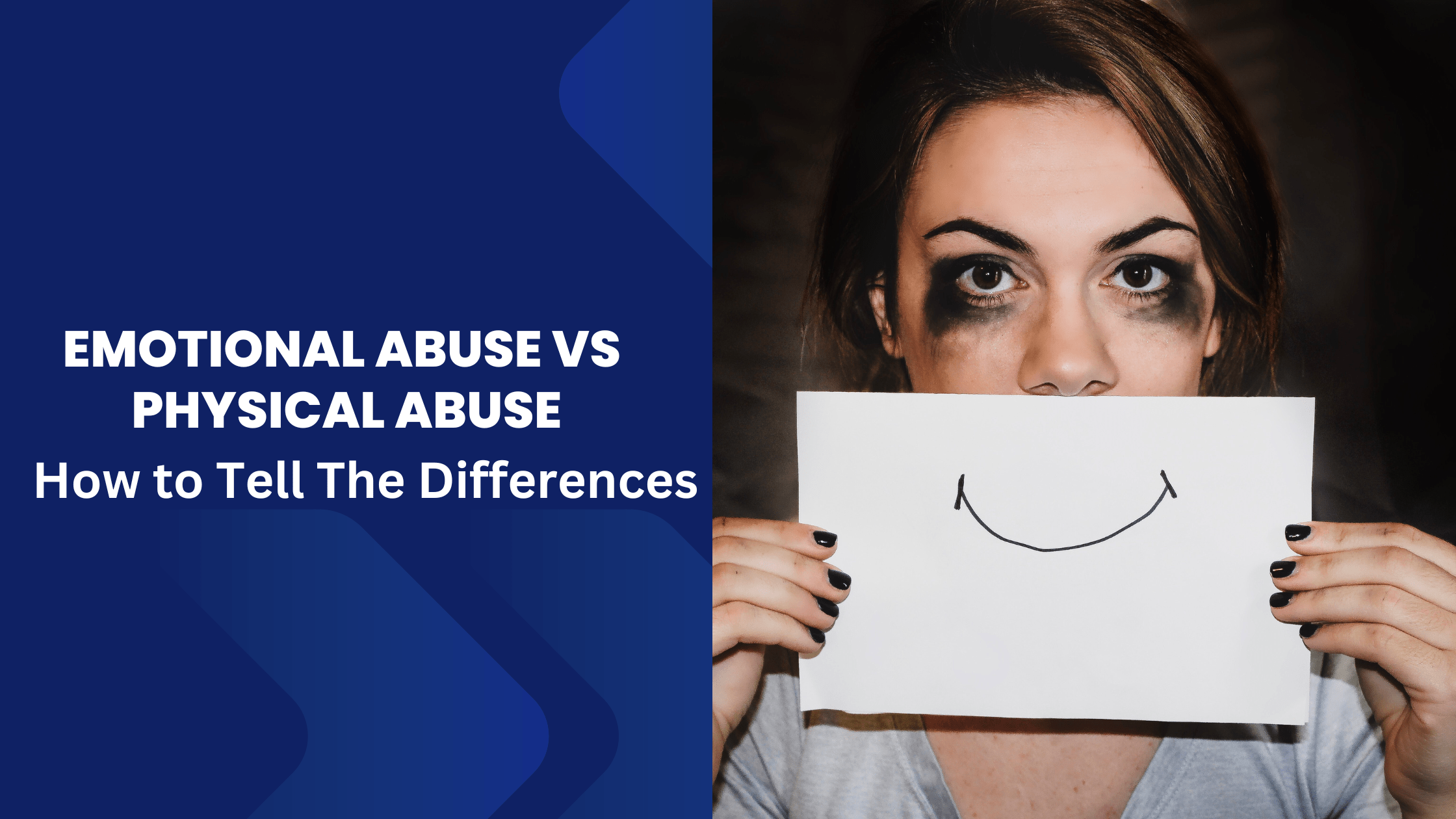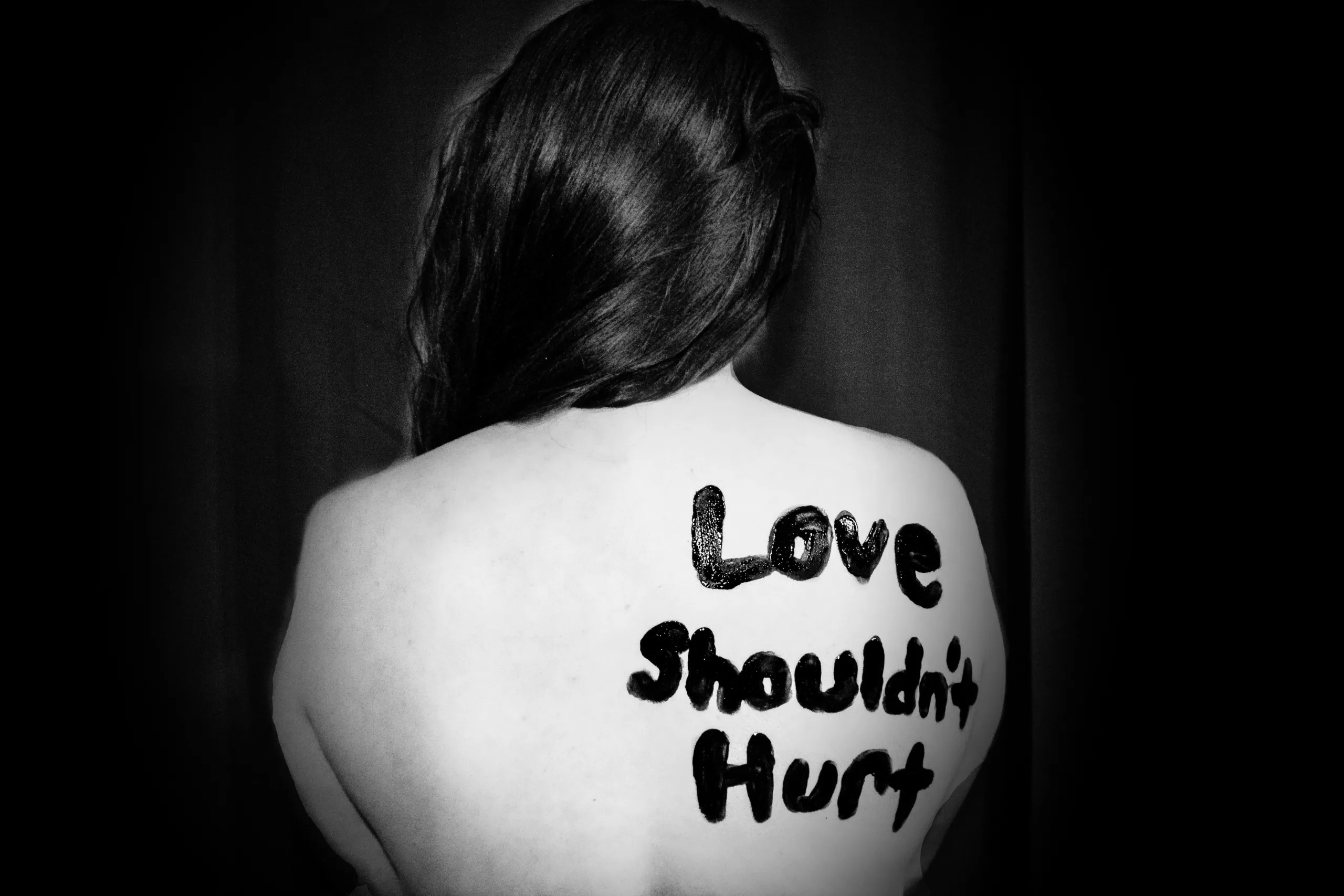When it comes to abuse, many people tend to think of physical acts such as hitting or punching. However, abuse is not limited to just physical actions. Emotional abuse is just as damaging, if not more so, but often goes unnoticed. In order to properly address and combat abuse in all its forms, it is crucial to discuss emotional abuse vs physical abuse and understand the difference between emotional and physical abuse.
Definition of Emotional Abuse
Emotional abuse refers to a pattern of behaviors that aim to control, manipulate, or belittle another person’s feelings, self-worth, or sense of identity. This can include constant criticism, humiliation, gaslighting, intimidation, or isolating the victim from their support system. Emotional abuse can leave long-lasting scars, eroding an individual’s self-esteem and causing severe emotional distress.
Definition of Physical Abuse
Physical abuse, on the other hand, involves the use of force or violence that causes bodily harm or injury. This can include actions such as hitting, punching, slapping, kicking, or any other form of physical assault. Physical abuse often leaves visible marks or bruises on the victim, and its immediate effects can range from pain to serious injury.
Emotional Abuse vs Physical Abuse, Importance of Understanding the Difference
Understanding the difference between emotional and physical abuse is essential for several reasons. Firstly, it helps victims identify and acknowledge the abuse they are experiencing, which can be challenging when the abuse is primarily emotional. Secondly, understanding the distinction allows for appropriate support and intervention from friends, family, and professionals.
Lastly, recognizing emotional abuse as equally damaging as physical abuse is important for advocating for stronger legal protections for victims and promoting a more comprehensive approach to ending all forms of abuse.
By understanding the contrast between emotional and physical abuse, we can begin to address the issue more effectively and provide much-needed support for survivors. No one should ever have to endure abuse of any kind, and it is our responsibility to educate ourselves and others to break the cycle of abuse.

Forms of Abuse
Emotional and physical abuse are two distinct forms of mistreatment that can have profound effects on a person’s well-being. While physical abuse involves the use of force or violence, emotional abuse targets a person’s mental and emotional state. Understanding the differences between these two types of abuse is crucial in recognizing and addressing the harm inflicted upon individuals.
Types of Emotional Abuse
Emotional abuse encompasses a range of behaviors designed to coerce, manipulate, or belittle an individual. This can include constant criticism, gaslighting, humiliation, and isolation. Victims of emotional abuse often experience low self-esteem, anxiety, depression, and a distorted perception of reality. Despite lacking visible physical wounds, the emotional scars left behind can be equally damaging.
Types of Physical Abuse
On the other hand, physical abuse involves any form of physical harm or violence enacted upon a person, including hitting, kicking, choking, and restraining. The visible evidence of physical abuse can be easier to recognize, leaving victims with bruises, broken bones, and other injuries. This type of abuse often leaves lasting physical pain as well as emotional trauma.
Understanding the distinction between emotional and physical abuse is crucial for providing support and intervention for those affected. By recognizing the signs and educating ourselves and others, we can work towards creating a safer and healthier environment for everyone.
RELATED: How to Leave Emotionally Abusive Relationship
Characteristics of Emotional Abuse
Emotional abuse is a form of mistreatment that may not leave visible bruises, but it can have just as devastating an effect on a person’s well-being as physical abuse. It is crucial to understand the differences between emotional abuse and physical abuse to spot the signs and offer support to those who may be suffering. In this section, I will outline some key characteristics of emotional abuse.
Verbal Insults and Humiliation
One common characteristic of emotional abuse is the use of verbal insults and humiliation to demean and degrade the victim. This can include name-calling, belittling, and constantly criticizing their appearance, intelligence, or abilities.
Isolation and Control
Emotional abusers often isolate their victims from friends and family, making them feel dependent and trapped. They may control who the victim can see, speak to, or spend time with, effectively cutting off their support networks.
Gaslighting and Manipulation
Gaslighting is a manipulative tactic used by emotional abusers to make their victims doubt their own perception of reality. They distort the truth, deny past events, and twist situations, leaving the victim feeling confused, helpless, and questioning their own sanity.
Threats and Intimidation
Emotional abusers may use threats and intimidation to control their victims. They might make implied or explicit threats of physical harm or destruction of property, leaving the victim living in constant fear.
Neglecting Emotional Needs
Lastly, emotional abuse often involves neglecting the emotional needs of the victim. The abuser may consistently dismiss or ignore the victim’s feelings, leading to feelings of worthlessness and emotional abandonment.
Understanding these characteristics can help us identify emotional abuse and extend support to those who are enduring it. No one should have to suffer in silence and alone.

Characteristics of Physical Abuse
Physical abuse is a form of abuse that involves physical harm or violence inflicted upon an individual. It often leaves behind visible marks or injuries, serving as tangible evidence of the abuse. This form of abuse can manifest in various ways, each with its own distinctive characteristics.
Physical Harm and Violence
Physical abuse includes any act that causes bodily harm or injury to someone. This can involve hitting, kicking, slapping, punching, or any form of physical violence directed towards a person. The intent of physical abuse is to cause pain, injury, or even death to the victim.
Sexual Abuse
Sexual abuse is a type of physical abuse that involves any forced or non-consensual sexual activity. This can range from unwanted touching or groping to rape and other forms of sexual assault. Sexual abuse violates a person’s boundaries and autonomy, causing immense emotional and physical trauma.
Confinement and Restraint
In some cases, physical abuse may also involve confining or restraining someone against their will. This can include tying someone up, locking them in a room, or keeping them isolated from others. It is a way for the abuser to exert control and power over the victim.
Deprivation of Basic Needs
Physical abuse can also involve depriving someone of their basic needs, such as food, water, shelter, or medical care. This form of abuse aims to assert dominance and control by withholding essential resources and causing suffering to the victim.
Understanding the characteristics of physical abuse is crucial in recognizing and addressing this form of abuse. By being aware of the signs and effects of physical abuse, we can better support and protect those who may be experiencing it.
Effects of Emotional Abuse
Emotional abuse and physical abuse are both forms of abuse, but they differ in how they affect individuals. Emotional abuse can be just as damaging as physical abuse, if not more so because it leaves invisible scars. In this section, I will discuss the various effects of emotional abuse and provide a deeper understanding of the difference between emotional and physical abuse.
Psychological Impact
Emotional abuse can have a profound psychological impact on victims. Constant insults, belittlement, and humiliation can erode a person’s self-esteem, leading to feelings of worthlessness and self-doubt. Victims may also experience anxiety, depression, and other mental health issues as a result of the emotional trauma they endure. The long-term effects can be devastating, affecting the victim’s ability to form healthy relationships and trust others.
Long-Term Consequences
Unlike physical abuse, emotional abuse doesn’t leave visible marks, but its effects can persist long after the abuse has ended. Victims may struggle with self-confidence, experience difficulties setting boundaries, or have trouble regulating their emotions. The impact of emotional abuse can manifest in various ways, such as a heightened fear of conflict or a constant need for validation from others.
Victim’s Perspective
From the victim’s perspective, emotional abuse can be incredibly isolating and confusing. The manipulation and psychological control employed by the abuser can make the victim doubt their own reality and question their worth. They may feel trapped and powerless, unable to escape the torment. Furthermore, since emotional abuse often happens behind closed doors, it can be challenging for outsiders to recognize and intervene.
Understanding the effects of emotional abuse is crucial in providing support and assistance to victims. By recognizing the distinct differences between emotional and physical abuse, we can work towards creating a safer and more empathetic society for those who have experienced emotional abuse.
Effects of Physical Abuse
Physical abuse can have devastating effects on individuals who experience it. The most obvious impact is the occurrence of physical injuries, which can range from bruises and cuts to broken bones and internal damage. The visible marks left by physical abuse can serve as a constant reminder of the trauma endured, leading to long-lasting emotional and psychological pain.
Physical Injuries
Victims of physical abuse often bear the scars, both physical and emotional, from the abuse they have endured. The pain inflicted during physical assaults can lead to permanent physical disabilities, chronic pain, and a decreased quality of life. These physical injuries may heal with time, but the emotional scars may never fully fade away.
Psychological Trauma
Beyond the physical injuries, the psychological trauma experienced by victims of physical abuse can be profound. The fear, anxiety, and depression that often accompany physical abuse can have long-term effects on a person’s mental health. Victims may suffer from post-traumatic stress disorder (PTSD), sleep disorders, and increased vulnerability to substance abuse.
Cycle of Violence
Physical abuse often occurs within a cycle of violence, where periods of tension-building are followed by explosive episodes of physical aggression. This cycle can trap victims in a constant state of fear and uncertainty, as they never know when the next abusive incident will occur.
Societal Impact
The effects of physical abuse extend beyond the individual level and impact society as a whole. Physical abuse can strain social services, including healthcare, law enforcement, and legal systems. Additionally, the societal costs associated with providing long-term support and rehabilitation for victims of physical abuse are significant.
physical abuse leaves a lasting impact on its victims, resulting in physical injuries, psychological trauma, and a cycle of violence. The effects ripple through society, affecting individuals, families, and communities. It is important to raise awareness about the consequences of physical abuse and work towards ending this cycle of violence.
Recognizing and Addressing Abuse
Abuse can take many forms, but it’s important to understand the difference between emotional abuse and physical abuse. Emotional abuse leaves no visible scars, but its effects can be just as damaging as those caused by physical abuse. Recognizing the signs of both forms of abuse is crucial in order to address and seek help for those who may be experiencing it.
Signs of Emotional Abuse
Emotional abuse may include belittlement, constant criticism, isolation from loved ones, controlling behaviors, and manipulation. Victims of emotional abuse often experience low self-esteem, anxiety, and depression. It can be challenging to recognize emotional abuse since there are no physical bruises, but paying attention to consistent patterns of behavior and the effect it has on the victim’s well-being is key.
Signs of Physical Abuse
Physical abuse involves the use of physical force, resulting in injury or pain. It may include hitting, pushing, slapping, or choking. Bruises, broken bones, and other physical injuries are evidence of physical abuse. Victims of physical abuse often exhibit fear, and anxiety, and may withdraw from social activities.
Addressing Emotional Abuse
When addressing emotional abuse, it is crucial to validate the victim’s feelings and support them by encouraging self-care and seeking counseling. Creating a safety plan and finding a support system can provide the victim with the necessary resources to break free from the abusive relationship.
Addressing Physical Abuse
Addressing physical abuse requires immediate action to ensure the victim’s safety. Encouraging them to contact the authorities and offering shelter or resources can be life-saving. A safety plan should be developed to protect the victim and provide them with the tools needed to escape the abuser.
Seeking Help and Support
If you or someone you know is experiencing either emotional or physical abuse, it is vital to reach out for help. Contacting a helpline or speaking with a trusted friend or family member can provide the support needed to navigate through the difficult process of addressing and ending the abuse. Remember, no one deserves to be mistreated or feel trapped in an abusive relationship.
Conclusion
Understanding the difference between emotional abuse and physical abuse is crucial in promoting healthy relationships and advocating for prevention. While both forms of abuse are harmful, they affect individuals in distinct ways.
Understanding the Distinction
Emotional abuse involves manipulative behaviors and tactics that undermine a person’s self-esteem, dignity, and overall mental well-being. It can include verbal attacks, manipulation, control, and isolation. The effects of emotional abuse can be long-lasting and deeply damaging to a person’s self-confidence and self-worth.
On the other hand, physical abuse involves acts of violence or harm toward another person’s body. It can include hitting, kicking, slapping, or any form of physical aggression. The immediate physical pain and injuries caused by physical abuse are visible and tangible.
Advocacy and Prevention
To address emotional abuse, it is important to raise awareness and educate others about its signs and impacts. By advocating for victims of emotional abuse, we can provide them with the support they need to heal and break free from toxic relationships.
Promoting Healthy Relationships
In order to prevent both emotional and physical abuse, we must promote healthy relationships and educate people on what constitutes a healthy dynamic. Encouraging open communication, respect, and consent is key to fostering relationships built on mutual trust and understanding.
By understanding the distinction between emotional abuse and physical abuse, we can work towards creating a safer and more compassionate society, free from any form of abuse. Together, we can make a difference and promote healthier relationships for everyone.



